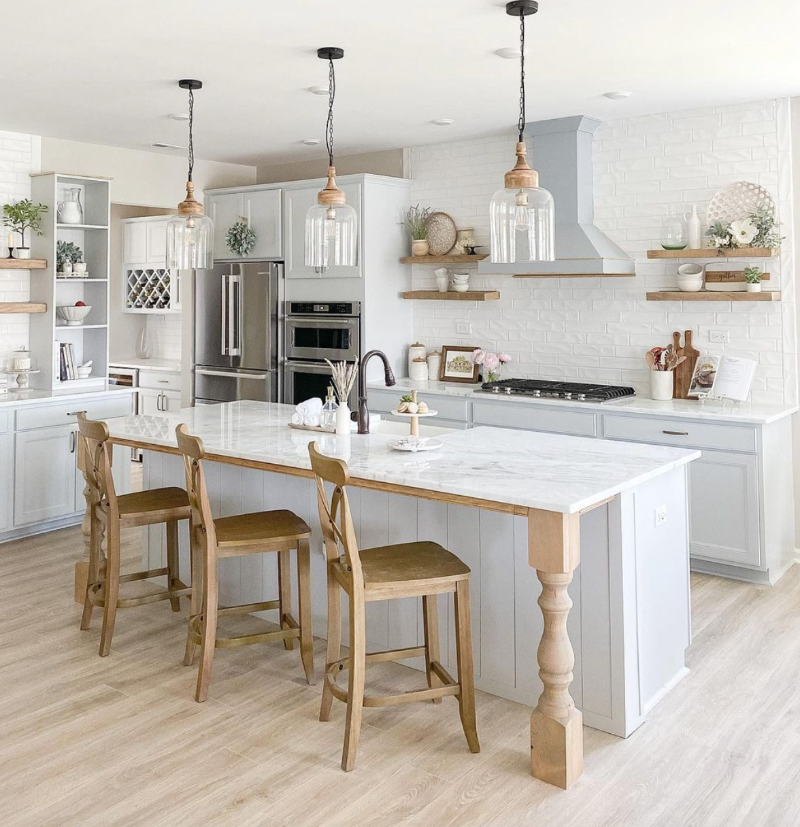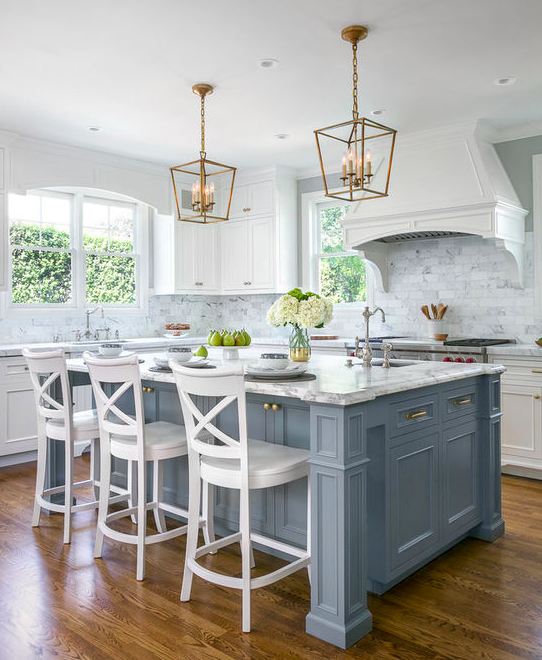Top Factors To Consider When Choosing a Kitchen Area Island Leg for Modern Kitchen Area Insides
In the world of modern-day kitchen interiors, the selection of a kitchen area island leg is critical, influencing both looks and capability. As these elements link, they increase better questions regarding exactly how to accomplish the perfect balance in between design and usefulness, leaving one to contemplate the effects of each decision on the general kitchen area experience.
Material Options
When it involves selecting a kitchen island leg, material choices play a vital duty in both looks and capability. kitchen island leg. One of the most usual materials include wood, metal, and composite options, each offering potential downsides and distinctive advantages
Timber is favored for its warmth and classic allure, providing an ageless look that complements various kitchen area styles. It is extremely versatile, permitting personalization in terms of coatings and shades. However, timber may need more maintenance to stop bending or damage from dampness.
Metal, on the various other hand, brings a contemporary and industrial panache to cooking area islands. Stainless-steel and wrought iron are popular selections, understood for their resilience and resistance to put on. They can hold up against the roughness of daily use yet may do not have the warmth linked with wood.
Composite products, such as engineered timber or synthetic blends, offer an equilibrium between price, toughness, and aesthetics. These choices are typically developed to mimic the appearance of natural materials while offering resistance to spills and scrapes.
Inevitably, the choice of product ought to straighten with the total cooking area design and meant usage, making sure that the kitchen area island leg is both aesthetically appealing and practical.
Design And Style
The style and style of a cooking area island leg significantly add to the general visual of the space, enhancing the chosen product. When selecting the leg style, consider the architectural design of the kitchen. For example, sleek, minimalist legs made from stainless-steel or acrylic harmonize with modern designs, while ornate, turned wood legs boost typical or farmhouse aesthetics.
In addition, the surface of the leg can affect the aesthetic effect; a sleek chrome or matte black coating may stimulate modern elegance, while distressed wood talks with rustic charm. The leg's shape also plays a vital function-- right, angular kinds share an even more commercial feeling, whereas tapered or curved legs present a softer, extra inviting appearance.
Integrating decorative components, such as embellishments or makings, can include character and character to the cooking area island, further improving its duty as a prime focus. Ultimately, the chosen leg style must not just line up with the overall kitchen area layout but also show the homeowner's personal preference, making certain that the kitchen island ends up being a practical and harmonious focal point within the modern-day cooking area interior.
Height and Proportions
Achieving the best height and percentages for a cooking area island leg is essential for both functionality and aesthetics. Kitchen area islands normally vary in height from 28 to 36 inches, relying on their planned usage-- whether as a food preparation surface area, eating area, or work area. Requirement counter top height is roughly 36 inches, making it vital that the legs you choose enhance this elevation to provide a smooth, incorporated appearance.
Percentages likewise play a vital function in the visual equilibrium of the kitchen area. A slim leg may be suitable for a modern or minimalistic island, while a much more considerable leg may be required for rustic or conventional layouts.
When selecting the elevation and proportions of the cooking area island leg, maintain in mind the general layout motif of your kitchen area. This attention to information not only boosts the functionality of the space yet additionally contributes to a aesthetically attractive and cohesive indoor design.
Stability and Assistance
Regularly guaranteeing security and support in kitchen island legs is crucial discover here for both safety and security and functionality. A well-constructed cooking area island need to endure day-to-day use, including weight from appliances, cooking, and celebrations. Therefore, the option of legs should focus on robust products and layouts that can offer sufficient support.
When evaluating stability, consider the leg's product-- steel, light weight aluminum, or wood typically use premium toughness compared to lighter alternatives. Additionally, the design needs to include a broad base to distribute weight uniformly and minimize the threat of tipping or tottering. As an example, legs developed with an A-frame or cross-bracing can dramatically boost stability.

Including these factors to consider will not only improve the total security of the cooking area area yet also improve the durability and performance of the kitchen island, making it a useful focal point in modern-day cooking area interiors.
Finishing Touches
When it pertains to finishing a cooking area island, thoughtful finishing touches can substantially boost both its visual appeal and functionality. Selecting the ideal leg design is crucial, however matching it with proper information can change the entire area. Think about including ornamental aspects such as toe kicks or walls that match the kitchen cabinetry or flooring to produce a smooth appearance.

Last but not least, the selection of coatings plays a crucial function in connecting the style together. Whether deciding for a matte, shiny, or distinctive finish, ensure that it aligns with the total style of your kitchen. A cohesive shade palette and product choice will boost the kitchen island, making it an exciting centerpiece. By paying focus to these finishing touches, property owners can develop a kitchen area island that is both gorgeous and practical, accommodating their way of living and style preferences.
Conclusion

In the realm of contemporary kitchen interiors, the option of a kitchen area island leg is essential, influencing both looks and functionality.The design and style of a kitchen area island leg considerably contribute to the overall aesthetic of the room, matching the selected material.Achieving the best height and percentages for a kitchen island leg is vital for both functionality and aesthetic appeals.Regularly making certain stability and assistance in kitchen area island legs is crucial for both safety and functionality.In recap, selecting a cooking area island leg for modern interiors calls for careful factor to consider of product options, design style, elevation, percentages, and security.